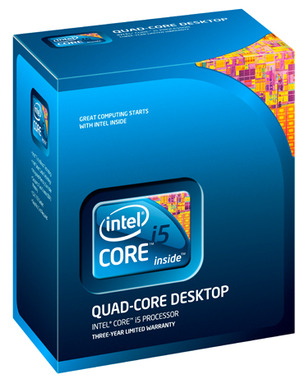
Turbo Boost
Intel had also updated the Turbo Boost technology of Bloomfield for the new Lynnfield design. Despite the new technology being much better than that of Bloomfield, Intel hasn't given it a new name (well done again, the Intel branding team), so we'll call it Turbo Boost (rev 2). Turbo Boost works by raising the CPU multiplier whenever the CPU isn't running at its maximum TDP - in the case of Lynnfield, that's 95W.While the original Turbo Boost would only raise the multiplier by one multiplier (133MHz), we saw all three Lynnfield CPUs increase their frequency by up to four (up to 532MHz). In other words, the i7-870 operates between 2.93GHz and 3.46GHz, the i7-860 between 2.8GHz and 3.33GHz, and the i5-750 between 2.66GHz and 3.2GHz.
However, these numbers only tell half the story. This is because Turbo Boost (rev 2) is configured slightly differently on each of the three CPUs: the more expensive the model, the more time it will spend at its maximum Turbo Boost (rev 2) frequency. For example, the 2.8GHz i7-870 always ran at between 3.2GHz and 3.46GHz no matter which stressful benchmark we ran, while the 2.66GHz i5-750 rarely ramped up to 3.2GHz.
 However, enabling the full force of Turbo Boost (rev 2) requires a trip to the BIOS to enable the C6 sleep state, which is typically disabled by default. On the Asus P7P55D Deluxe, you need to enter the Advanced page of the CPU Configuration menu, enable Intel C-State Tech and set the C-State Package Limit Setting to C6.
However, enabling the full force of Turbo Boost (rev 2) requires a trip to the BIOS to enable the C6 sleep state, which is typically disabled by default. On the Asus P7P55D Deluxe, you need to enter the Advanced page of the CPU Configuration menu, enable Intel C-State Tech and set the C-State Package Limit Setting to C6.Test Setup
To evaluate the performance of the new Lynnfield CPUs, we tested them against a variety of other Intel and AMD CPUs. We selected the ubiquitous 2.4GHz Core 2 Quad Q6600, and also the 3GHz Q9650, as we regard this to be the most desirable Core 2 Quad. We also included the 3.33GHz Core 2 Duo E8600, as this is the fastest dual-core CPU to date.You'll also find the benchmark results of AMD's two fastest desktop CPUs, the 3.2GHz Phenom II X4 955 Black Edition and the 3.4GHz 965 Black Edition, plus the awesome 2.66GHz LGA1366 Core i7-920. We enabled Turbo Boost for the Bloomfield Core i7-920 and Turbo Boost (rev 2) for the Lynnfield CPUs.
As the different platforms (LGA775, LGA1156, LGA1366 and Socket AM3) use different motherboards and RAM it's also important to see how much it will cost you to upgrade these components. The table below shows which different components we used to test each platform. Common to all the test rigs were a Zotac GeForce GTX 280 (with ForceWare 185.68), a 160GB Seagate Barracuda 7200.9 hard disk, a PC Power and Cooling Silencer 750W PSU and Windows Vista Ultimate 64-bit, SP1.

Test Software
- Crysis v1.21
- X3: Terran Conflict rolling demo v1.2.0.0
- WPrime v2.00
- Custom PC Benchmarks v2007.235
- Maxon Cinebench 10 (x64)

MSI MPG Velox 100R Chassis Review
October 14 2021 | 15:04








Want to comment? Please log in.